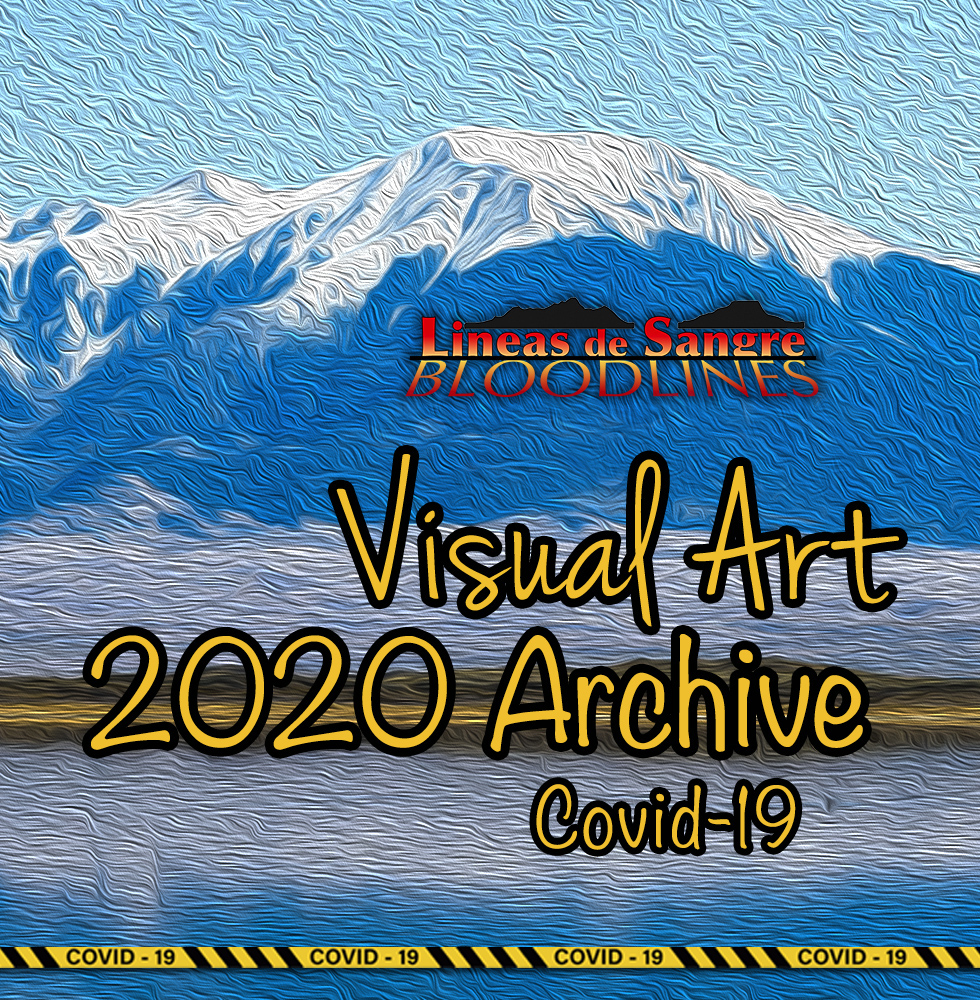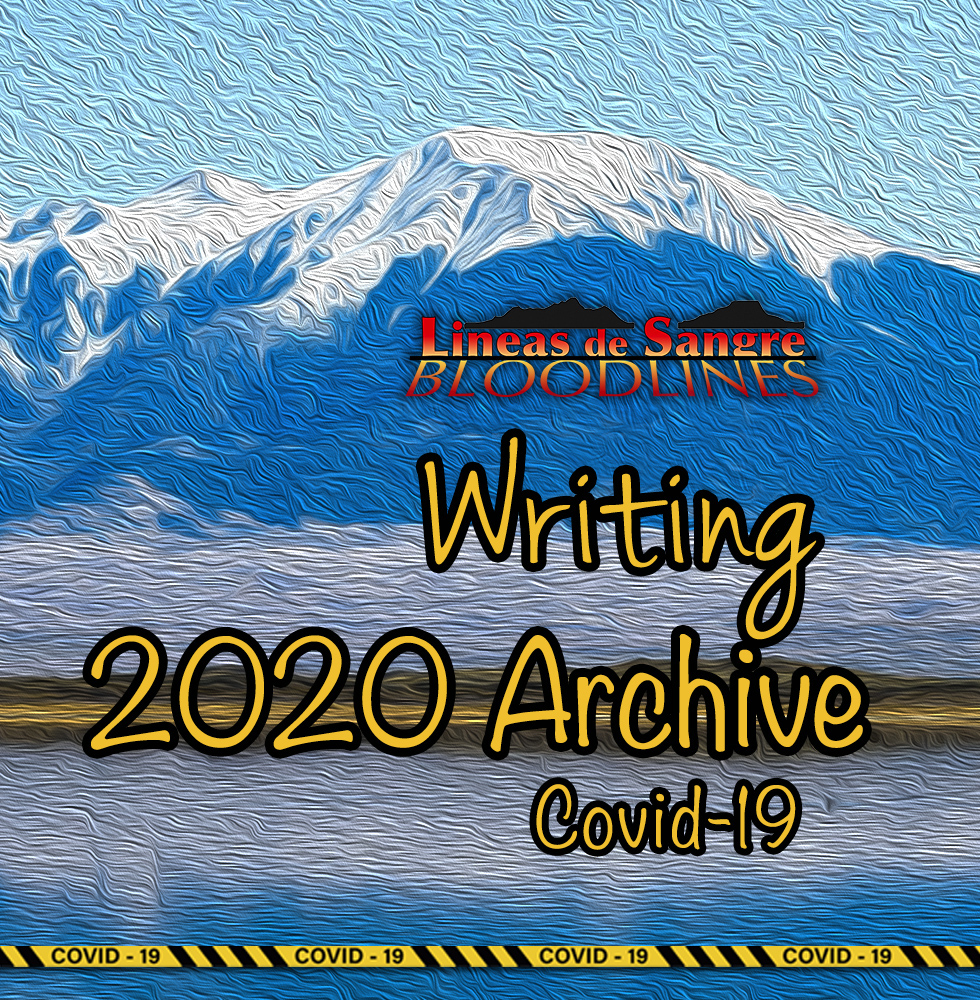2020 Bloodlines Covid-19 Archive

As the General Editor of Bloodlines, I would like to take this moment to thank Ily Reiling, Dustin Hyman, and Tom Nordgren
for imagining this special issue, Creativity in the Time of Corona. Ily Reiling is our energetic, dedicated, and talented art professor and we are fortunate
to have her presence in our community. I can’t wait to see what she builds with our
art program! Dustin Hyman and Tom Nordgren are two amazing creative writers and professors
who have also been working in the Trinidad area schools to develop an active Writing
in the School’s program (WITS). As you look through the issue, be sure to check out
the submissions from the winners of their K-12 Creative Writing Program. We are honored
to feature the young writers they brought together.
I wish you all health and peace, and hope that you enjoy this offering of art and
writing. I know that creativity in all forms helps me through life’s difficulties.
I am eager to see what our community continues to do.
Below are some words from Ily Reiling as she discusses the significance of art in
our culture. Enjoy the rest of the issue.
General Editor
Jean Alger, Professor of English

Welcome to this special edition of Bloodlines, Trinidad State College’s literary and art magazine. Thanks for cracking the virtual
cover and seeing how your friends and neighbors are coping with the current pandemic.
This time around we're online, and have asked people to contribute their thoughts
on the current coronavirus and how it might be affecting their creative lives. It's
a strange time, to understate reality, and we're all of us victims of both chance
and some deep underlying inequality--those fortunate enough to be spared direct suffering
have, even so, had their lives upended and their hopes for a fair and prosperous America
dimmed. But not extinguished. The offerings here are both diverse and rich, from poems
and meditations to frank statements and fine art. Along the way, our authors and artists
give us a unique portrait of our communal lives in this unprecedented time. May they
bring you both enjoyment and inspiration!
“. . . everything in life is writable about if you have the outgoing guts to do it,
and the imagination to improvise. The worst enemy to creativity is self doubt.”
Sylvia Plath
Tom Nordgren, Professor of English
There are certain moments which define each citizen of the world. For me, the first
of these moments was watching the 9/11 attacks being broadcast on repeat in my childhood
home. I was dumbstruck by the emotional, psychological, and physical impact it was
going to have on the world. The images slammed into my head over and over again. In
a daze, I slowly got closer to the screen, as if physical proximity would help with
comprehension. Eventually I pushed my eye up close to the screen. The incomprehensible
sense of destruction became more real as the images dissolved into pixilated light
and flashes. I could see the physical cells and its matrix of colored light. Here
was where the unhuman analytical zeros and ones transmitted the foreshadowing of the
unknown future. There was physical tangibility in that moment, beautiful in its simplicity
and truth. It provided an escape and solace.
When the human experiences an intense emotion such as fear, many things happen quickly.
Input from the stimulus is sensed and given to the “emotional processing” center of
the brain, the amygdala, to provide a response. The amygdala activates the hypothalamus,
which in turn activates the pituitary gland. The pituitary gland sends out the “Fight
or Flight” chemicals, including adrenocorticotropic hormones and adrenaline. Fearful
humans will experience things like goosebumps as the muscles of the body tense. A
“butterfly” in the stomach as blood pressure and breathing rate increase. The pupils
dilate causing tunnel vision and reduced hearing. This process primes the human body
to preform amazing feats of strength, courage, endurance, healing, and survival.
In response to the COVID and its precautionary actions, we can see interesting reactions
to this primal response to fear. Humanity has shown wholly unselfish acts of caring
and heroism. Individuals, companies, institutions, and governments shut down in order
to protect our most vulnerable populations. Neighbors, friends, and families risk
their own health to support those who need an extra hand. In other instances, we see
the animalistic side of fear. Toilet paper and hand sanitizer became luxury goods
with price gouging as a rotten cherry on top. Those of an outgoing disposition experience
cabin fever within the first few days of isolation. People start screaming at coughing
or sneezing individuals in supermarkets. Armed protests in the streets and public
centers are becoming common, citing individual rights violations caused by mandated
restrictions on work and social behaviors. These are fear responses in a time where
the flight aspect of fear is disallowed. We are stuck in a tar pit of helpless inactivity
and worry.
Most people alive today have not experienced a pandemic of this scale. But restrictions
on lifestyle and livelihoods of this type, along with high mortality rates, have been
common throughout human history. Giovanni Boccaccio, an Italian Renaissance poet and
writer, provides us a glimpse into the Third Bubonic Plague epidemic. His best-known
work, The Decameron, artfully describes the stories of people fleeing the Black Death
outbreak in 1348. Boccaccio knew personally how horrific this experience was through
his observation of mass graves, the disappearance of whole families, and the end of
economic stability. This wave of Bubonic Plague would result in the deaths of so many
that no one really know. This time of fear would lead to further fear-induced action
through the mass extermination of the Rhineland Jewish population. Although The Decameron
focuses on the tragic life and romances of those involved in the story, Boccaccio
allows us to sense the common human thread by employing comedy, wit, and morality
tales within the harrowing experience. Through art and creativity, we can find a thread
of hope and humor within chaos.
There have been famous examples of creative and inventive actions taken by those in
isolation caused by pandemics. Isaac Newton laid the foundation for his theories of
gravity and optics, as well as the development of calculus as Cambridge was closed
due to the 1665 Bubonic Plague outbreak. Shakespeare famously wrote King Lear and
Measure of Measure during the continuous outbreaks of plague in the Elizabethan era.
Bach, no stranger to disease and its devastating repercussions, wrote his Cantana
No. 25 titled There is Nothing Healthy in My Body a year after the great plaque of
Marseille left over 100,000 people dead. Albert Camus wrote his famous Le Peste, or
The Plague, focusing on the 1899 cholera epidemic and the helplessness humans experience
in a predetermined world. Edward Munch painted his “Self Portrait with the Spanish
Flu” in 1919. In this work he is seen as a haggard figure; aged and emaciated from
the pandemic which killed an estimated 20-100 Million people, world-wide. In his fluid
and gestural strokes, we see a man trapped and isolated in his sick room. Like his
most famous work, The Scream, the body holds the moral of the visual story: the diseased
body hidden under a mess of fabric, the eyes greyed into non-existent cataracts, the
mouth gapping as it continually gulps for air. In this painting, we can see slightly
into the world of pain which is caused by the disease. We also can see the insatiable
human spirit which will fight through all manner of assaults to survive. Life is unapologetically
tenacious.
As some creative individuals use the time during pestilence to create work about and
around the issues, other artists have utilized an outbreak of disease to advocate
for changes in social order. In the midst of the outbreak of the HIV-AIDS epidemic
in the 1970s, the outsider artist David Wojnarowicz established a space for the topic.
As gay communities were being ravished by the disease, the public and media opinion
turned hostile, leading to further bigoty, violence, and stigmatization of homosexuals
and those suffering from HIV-AIDS. In order to speak about this topic, Wojnawicz photographed
his lover and mentor moments after death. This work puts into stark contrast his physical
change from a strong handsome man into a gaunt shell of his former self. “The Other”
barrier is broken down, smashing the idea that the hardest hit demographic should
be left unseen and disregarded. Wojnawiczs’s photographs not only documented the suffering
and resulting grief of HIV-AIDS, but humanized his loved ones. Humans harvest pain
in order to hold up that mirror to nature. This mirror is vital to our evolution.
In the following years after this series, Wojnarowicz and fellow artists would provide
the world with their side of the story. This advocacy would help to unify the LBTQ
community, allow for scientific advancements to help mitigate the pandemic, and help
change public and political opinion.
As we grapple with our ever chaotic and unstable world, we sense that change is imminent.
Our feet slide, as the boat of habitual stability is unmoored. As more sails are unfurled,
all we know is that we have set off on a new journey. We have the opportunity to create
growth for our species and world through compassion, wisdom, and innovation. The possibilities
have become apparent during this crisis. Music has brought together communities, as
people sing from their quarantined apartments to the first responders and health care
workers. Innovation and creative problem solving abound, as scientists and researchers
working collaboratively across the world for a vaccine. Home-grown groups of creatives
sew masks for hospitals and nursing homes from scrap fabric. Internet platforms provide
psychological solace as individuals provide human connection, entertainment, education,
and support to strangers. If necessity is the mother of invention, creativity is invention’s
beloved twin sibling.
This edition of Trinidad State Colleges Bloodline Magazine is a celebration of all
that our local Trinidad and Alamosa communities are doing during these trying times.
We, the Arts Faculty of Trinidad State College, invite you to enjoy and contemplate
what is possible when the human spirit is given the space, instruction, and motivation
to express life. Thank you to all who entered work for this edition. You have now
entered the grand chronicle of creators who make during times of hardship. We honor
you.
Ily S. Reiling
Curator of Visual Arts, Bloodlines
Associate Professor of Fine Arts
Trinidad State College


